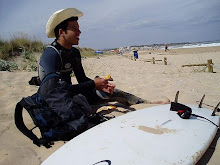The tall hill which now belongs to Tibá was
once pasture-land with little trees, some sugar cane and coffee plants remained
from back when this hillside was dedicated to these cash crops. When Johan took over the 20 hectare property
some 25 years ago, the entire landscape would change. Now, after having
planting trees appropriate for the climate and allowing nature to run its
course, the hillside is a lush green full of native and introduced vegetation
as well a home for several species of animals. Recently, a rare monkey was
spotted, the mico-leao (golden lion). When you look at it all, it’s difficult
to imagine that this was pasture-land; just as difficult as it can be to
imagine cities as being forests.
Johan is an architect and wrote a book, a
construction manual for sustainable construction entitled: ‘the Barefoot
architect’. TIBÁ began as a place where architectural students could come and
learn about eco-construction and try out these techniques. Gradually, the types
of people visiting Tibá changed. Many more people were coming from all walks of
life, all with a general desire to escape the city and find an alternative,
more sustainable and healthier way of life. A desire to reconnect with nature.
I have to admit I had some doubts about
doing an apprenticeship with Tibá. For one, they charge R$1000 to be an
apprentice, working 8 hours per day for 5-6 weeks. Simple accommodations and
three meals a day included. However, the price seemed high for such an
endeavour. In the end, I decided to give it a shot, and took a bus to Nova
Friburgo, then to Bom Jardim, then a taxi to Tibá. The taxi driver who had
taken countless people to Tibá smiled when I told him where I was going. He
said: “you will learn a lot at Tibá, and afterwards you’ll see the world in a
completely different way”. These words helped ease my doubts.
And now, I'm already beginning to understand what the taxi driver meant....
To be continued…
(I’m tired so you'll have to wait in suspense until I continue this story!)
